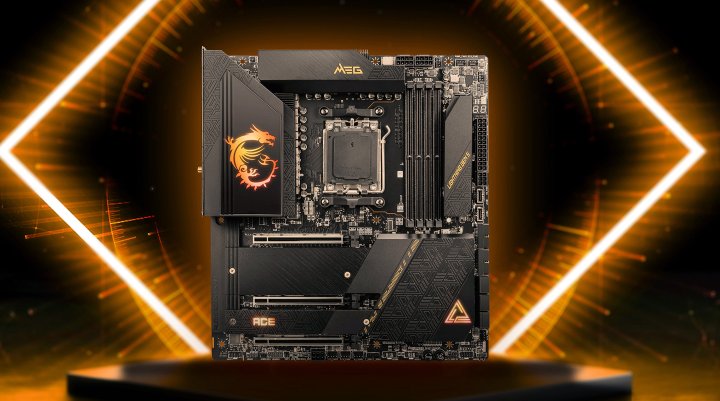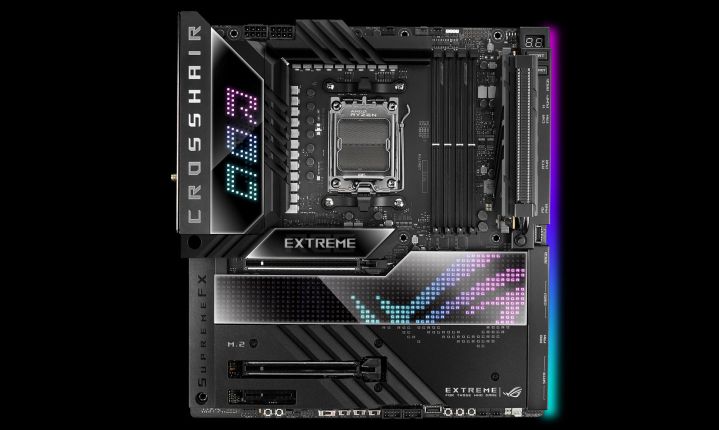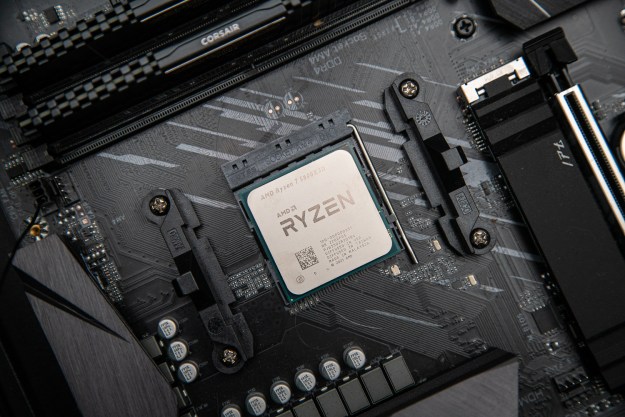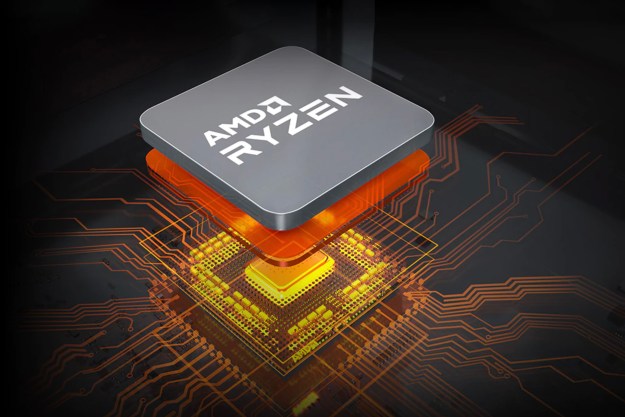As part of Computex 2022, many new motherboards for the upcoming AM5 socket have been announced, set to release in time for the launch of the AMD Ryzen 7000. AMD’s new platform will support three chipsets: The X670, X670E, and B650.
New AM5 chipsets
The X670 platform will be aimed at enthusiasts and will come with a range of bells and whistles to make the most of the next-gen AMD CPUs. MSI and Asus have already announced a few models, but they’re not the only manufacturers to have something new up their sleeves.

The introduction of next-gen AMD Ryzen 7000 processors is a big step for AMD, and consequently, for the makers of matching AM5 motherboards. AMD has held on to the AM4 socket for a long time, but it now confirms that it plans to retire it and move on to the new AM5 platform. With that, three new chipsets are being introduced. The X670 and the X670E are the two chipsets with access to PCIe 5.0, while B650 doesn’t support it at all.
When it comes to X670 motherboards, we have a lot to look forward to. Seeing as AMD Ryzen 7000 is DDR5-exclusive, all of these boards open up support for both DDR5 memory and PCIe 5.0. The X670E (Extreme) chipset takes things a step further and offers support for extreme overclocking as well as PCIe 5.0 support through both the PCIe slot and the M.2 slot. The X670 platform, on the other hand, limits PCIe 5.0 support to just the M.2 slot.
MSI AM5 motherboards

Let’s take a closer look at some of the future best motherboards that will slowly be making their way onto the market in the weeks and months to come. MSI is one of the manufacturers with the largest initial lineup, serving up several motherboards as well as upgrades to the board specification. The motherboards will offer full access to ARGB Gen 2, meaning you’ll be able to make them as colorful as you like. Some — if not all — of the X670 models will feature the M-Vision Dashboard, enabling touch controls, customization, and easier insight into the performance of your system.
The MSI MEG series of motherboards receives two new entries: MEG X670E Godlike and MEG X670 Ace. These boards have an E-ATX PCB size, come with up to 24+2 voltage regulator module (VRM) phases, and 105A Smart Power Stage. Seeing as these motherboards are aimed at high-end components, they receive extra cooling through a stacked fin array design heatsink and a heat pipe that helps dissipate heat effectively while your PC tackles resource-heavy tasks. On the MEG motherboards, we’ll find up to four M.2 slots as well as an add-on card that lets users expand with an extra two PCIe 5.0 x4 M.2 slots.
MSI will also offer the MPG X670 Carbon Wi-Fi motherboard with 18+2 VRM phases and four M.2 slots as well as onboard 2.5G LAN access and Wi-Fi 6E. There’s also the MSI PRO series, made for professionals and creators, dubbed the MSI PRO X670-P Wi-Fi, WITH 14+2 VRM phases and one M.2 PCIe 5.0 slot.
MSI hasn’t disclosed the pricing of the new motherboards just yet, but it promised that they will launch in the fall of 2022.
Asus AM5 motherboards

The next manufacturer to hit us with some juicy motherboard news is Asus, and much like MSI, there’s a fair bit to be excited for, although only the flagship board has been talked about so far: The Asus ROG Crosshair X670E Extreme. By the looks of it, this motherboard is shaping up to be an overclocker’s dream come true, what with the 20+2 VRM rated to 110A.
By default, the motherboard offers two M.2 slots, but you can upgrade all the way up to five with two M.2 expansion cards. It also comes with two PCIe 5.0 slots, access to Wi-Fi 6E and 10Gb LAN, and a whole lot of ports, including USB 4.
Gigabyte AM5 motherboards

Gigabyte has confirmed four X670 motherboards: The Aorus Xtreme, Aorus Master, Aorus Pro AX, and creator-focused Aero D. Despite being the flagship motherboards from Gigabyte, all four of them will use the X670 chipset instead of X670E. For the Aorus Xtreme, at least, it will have PCIe 5.0 for both the graphics and SSD, but X670 only technically requires PCIe 5.0 for the SSD.
The company is hosting a week-long series at Computex, so we’ll likely get more details toward the end of the week. For now, we only know that the motherboards are coming soon and that they’re using X670. As has been the case with previous Aorus boards, however, we expect things like dense VRM stages and top-tier networking.
Other AM5 motherboards

AMD’s official website teases the ASRock X670E Taichi and the Biostar X670E Valkyrie, so there are plenty of other motherboards on the way.
Undoubtedly, more AMD Zen 4 motherboards will follow in the weeks to come, and we’ll keep you posted as we hear about them. So far, it seems clear that both AMD and motherboard makers are eager to steal some of the spotlight from Intel and bring AMD to new levels of overclocking and high-end performance. The wait for the next-gen AMD processors is bound to be exciting, as many more details are yet to be revealed.
Editors' Recommendations
- AMD is valiantly keeping its word to gamers
- AMD 7000X3D V-Cache CPUs could challenge Intel at CES 2023
- You probably can’t hit max clock speeds on AMD’s Ryzen 9 7950X
- New AMD B650 Extreme motherboards are built for budget overclocking
- AMD says the $300 Ryzen 5 7600X beats Intel’s best by up to 17%



